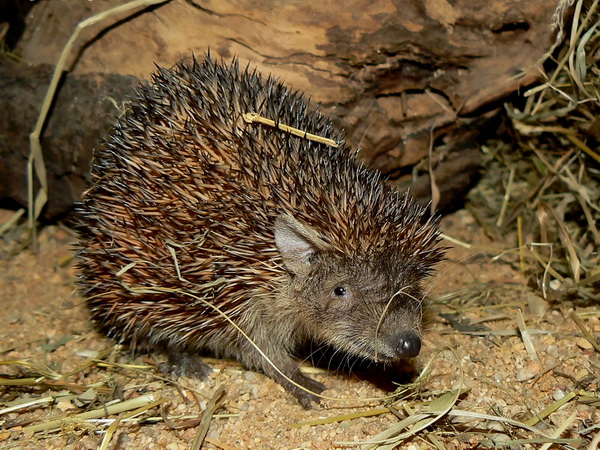Methods for sexing tenrecs
Tenrec owners and especially first time owners often wonder how they can sex their tenrec as they do not have regular genitals to detemine their sexes. In this article we provide a few options to help the matter, because there are a few methods!
Cloaca
First off, we will start at the beggining: why can’t you tell a tenrec’s sex by their genitals? Well, because they don’t have them. At least not in the usual way in mammals where males have a penis and females have a vulva. Tenrecs are an odd bunch and definitely in this regard. Both sexes have cloacas. This means they have one single cavity for all purposes: to urinate, to excrete, to breed and to birth. The single canal is linked to all inside organs responsible for these functions, so telling a tenrec’s sex by the cloaca is impossible. But that doesn’t mean you can’t tell their sex at all..
Head shape
Though this is very much dependent on lineage and body type, the widely accepted theory is that males have a slightly wider head shape than females, with more distance between their eyes. Though this method is certainly not reliable in any way, it might help when using sexing methods that don’t require a vet.
Eye discharge
Male tenrecs get white discharge every now and then. This is correlated to mating season, but it also happens in other situations sometimes, like stress or territorial behavior. It’s a great way to tell male and female apart, but by the time this happens, males are already sexually productive. The method is also very much flawed, because not all males actually discharge through their eyes and some females can also produce discharge. It is rare for a female to do so, but it is possible! This methods is often used by pet owners of tenrecs who don’t mind if their tenrec is a male or female, because they do not plan on breeding them and the tenrecs are housed alone.
Manually expressing the phallus
Yes, the outside of a cloaca is the same in both sexes. But since the cloaca is connected to all organs responsible for urinating, excreting, breeding and birthing, there are some things you can do to determine the sex of a tenrec. Males have a phallus inside their cloaca, which can be manually pushed out to determine their sex. When you press on the belly above the cloaca and push downwards, the phallus or penis of the male tenrec should be pressed out of the cloaca. Females do not have a phallus and thus, the method seems quite simple. A phallus means that the tenrec is male and no phallus would mean the tenrec is female. Right? Well, that’s not always the case, though it is a trustworthy method! But sometimes males just have a small phallus that doesn’t quite reach the end of the cloaca. Those males can still produce offspring and you might feel the phallus being there under the skin even if it’s not visible. So pay attention not only to what you seen, but also to what you feel. this method is often used in young tenrecs by breeders to determine sex before selling them and before turning to more expensive methods.
Scans or echoes
Some owners, especially breeders, want to be more certain about the tenrec’s sex and turn to a vet’s assistence. Vets differ in their methods for this one but scans and echo’s can show the inside of the cloaca. With these methods, you can visible see if there is a phallus inside the cloaca, making the tenrec male or female. This is a very trustworthy method and often used before turning to DNA testing.
DNA testing
A lot of breeders in the community worldwide, use DNA testing to have absolute certainty of the tenrec’s sex. These DNA tests are taken by swabbing the saliva of the tenrec and testing it for the ZFX-ZFY genes, determining if the tenrec is male. Genomia is the most used lab to do these tests as they’ve determined a specific SRY-marker identifying male gender in the representatives of families Tenrec, Setifer, Echinops and Hemicentetes. Meaning, they can test DNA to see if a tenrec has this specific gene. If they do, they are considered male, if they do not, they are considered female. Though this method is considered the most trustworthy option, it does not provide a 100% certainty. Because of the limited research done on hedgehogs and tenrecs, the test is based on one specific gene and it does not consider any chromosomal mutations limiting males from ever becoming productive or point out intersex tenrecs. These instances are very rare though.
Article by Judith Dunkirk.
Photo by Николай Усик / http://paradoxusik.livejournal.com/ – CC BY-SA 3.0, https://commons.wikimedia.org/w/index.php?curid=23088994




